|
News Archive: Dec. 1-31 |

|
Instrument to search for dust clumps on way to Pluto
As the first student-built instrument ever selected to fly on a planetary mission, the University of Colorado at Boulder's Student Dust Counter will monitor the density of dust grains in space as NASA's New Horizons buzzes to Pluto and beyond. Launch is set for mid-January.
 FULL STORY FULL STORY
 |  |

|
 |
Astronomers gain clues about fundamental physics
An international team of astronomers has looked at something very big -- a distant galaxy -- to study the behavior of things very small -- atoms and molecules -- to gain vital clues about the fundamental nature of our entire Universe. The team used the National Science Foundation's Robert C. Byrd Green Bank Telescope (GBT) to test whether the laws of nature have changed over vast spans of cosmic time.
 FULL STORY FULL STORY
 |  |
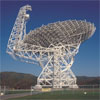
|
 |
OTHER HEADLINES Additional stories today
|
 |
Saturday will be one second longer than usual -- A "leap second" will be added to the world's clocks at 23 hours, 59 minutes and 59 seconds Coordinated Universal Time (UTC) Saturday. This corresponds to 6:59:59 p.m. EST, when the extra second will be inserted at the U.S. Naval Observatory. This marks the 23rd leap second to be added to UTC, a uniform time-scale kept by atomic clocks around the world.
|
 |
Two stunning pictures show young stellar clusters
Just like Charles Dickens' Christmas Carol takes us on a journey into past, present and future in the time of only one Christmas Eve, two of the European Southern Observatory's telescopes captured various stages in the life of a star in a single image.
 FULL STORY FULL STORY
 |  |

|
 |
2005 launch year ends with successful Russian flight
The final space launch of 2005 powered off the pad Wednesday night when a Russian Proton M rocket departed Baikonur Cosmodrome carrying an American satellite built to relay broadband communications to specially equipped jetliners flying across the Pacific Ocean.
 FULL STORY FULL STORY
 |  |

|
 |
Chandra looks back at Earth, sees aurora dance
In an unusual observation, a team of scientists has scanned the northern polar region of Earth with NASA's Chandra X-ray Observatory. The results show that the aurora borealis, or "northern lights," also dance in X-ray light, creating changing bright arcs of X-ray energy above the Earth's surface.
 FULL STORY FULL STORY
 |  |

|
 |
Test satellite for Europe's Galileo system launched
A European navigation spacecraft was shot into space Wednesday morning, signaling the birth of the continent's Galileo satellite system that will give millions of users access to the most precise positioning data on the public market.
 FULL STORY FULL STORY
 |  |

|
 |
Galaxy's neighboring spiral arm closer than thought
The Perseus spiral arm - the nearest spiral arm in the Milky Way outside the Sun's orbit - lies only half as far from Earth as some previous studies had suggested, according to an international team of astronomers.
 FULL STORY FULL STORY
 |  |

|
 |
Cassini spacecraft views small worlds of Saturn
Gazing across the ringplane, the Cassini spacecraft spots a Saturn-lit Mimas and the tiny Trojan moon Helene. Only the bright crescent on Mimas' eastern limb is lit by the Sun; the moon's night side is illuminated by Saturnshine, or "greylight" as it is called by imaging scientists.
 FULL STORY FULL STORY
 |  |

|
 |
A moon with two dark sides
Although it is no longer uncharted land, the origin of the dark territory of Cassini Regio on Saturn's moon Iapetus remains a mystery. Also puzzling is the equatorial ridge that bisects this terrain, and how it fits into the story of the moon's strange brightness dichotomy. The ridge is seen here, curving along the lower left edge of Iapetus.
 FULL STORY FULL STORY
 |  |

|
 |
Saturn's children
With the icy rings between them in this Cassini picture, Saturn's moons Dione and Tethys each show off the prominent features for which they are known. Dione, beyond the rings, displays wispy fractures that adorn its trailing side. Tethys, on the side of the rings closest to Cassini, shows its large impact basin Odysseus.
 FULL STORY FULL STORY
 |  |

|
 |
Scientists find 'light echoes' of ancient supernovae
Astronomers have found "light echoes" from three ancient supernovae by detecting their faint, centuries-old light reflected in the clouds of interstellar dust. The finding, published in Nature, means astronomers will, for the first time, be able to study these important but rare events that appeared hundreds to thousands of years ago.
 FULL STORY FULL STORY
 |  |

|
 |
Russian Proton rocket lofts navigation satellite trio
Three new satellites were launched by Russia on Sunday on the first leg of their mission to rejuvenate the country's system of space-based navigation that is relied upon by a host of military and civilian users.
 FULL STORY FULL STORY
 |  |
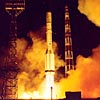
|
 |
A holiday gift from space: Christmas Tree cluster
The signs of the holidays are all around us - wreaths on doors, twinkling lights in windows, and decorated trees in living rooms. Even outer space is joining the year-end celebration with this new image of a star-forming region called the Christmas Tree cluster recently taken by NASA's Spitzer Space Telescope.
 FULL STORY FULL STORY
 |  |

|
 |
NASA astronomers spot rare lunar meteor strike
Astronomers at NASA's Marshall Space Flight Center have recorded a small but powerful meteoroid strike in the night on the moon's surface. As astronauts prepare for future missions to the moon, the space agency has a need to understand what happens after lunar impacts in order to protect explorers.
 FULL STORY FULL STORY
 |  |

|
 |
Space station receives 20th Russian-made resupply ship
A Russian Progress cargo freighter arrived at the International Space Station with a safe rendezvous and docking Friday. The linkup with the station's Pirs docking compartment occurred 2:46 p.m. EST (1946 GMT), eight minutes ahead of schedule, as the two craft flew 220 miles above the Atlantic Ocean off the coast of South America.
 MISSION OVERVIEW MISSION OVERVIEW
 |  |
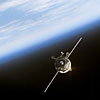
|
 |

Additional coverage for subscribers:
 VIDEO:
HIGHLIGHTS OF RENDEZVOUS AS SEEN FROM PROGRESS PLAY VIDEO:
HIGHLIGHTS OF RENDEZVOUS AS SEEN FROM PROGRESS PLAY
 VIDEO:
FREIGHTER DOCKS TO THE PIRS MODULE SHORT | FULL LENGTH VIDEO:
FREIGHTER DOCKS TO THE PIRS MODULE SHORT | FULL LENGTH
 SUBSCRIBE NOW SUBSCRIBE NOW

|
Hubble discovers new rings and moons around Uranus
To the surprise of astronomers, NASA's Hubble Space Telescope has photographed a pair of new rings around the distant planet Uranus. The largest is twice the diameter of the planet's previously known rings. The new rings are so far away that they are being called Uranus' "second ring system."
 FULL STORY FULL STORY
 |  |

|
 |
Saturn orbiter Cassini has galactic aspirations
Cassini briefly turned its gaze from Saturn and its rings and moons to marvel at the Carina Nebula, a brilliant region 8,000 light years from our solar system and more than 200 light years across. Nearly every point of light in this image is a star in our galaxy, the Milky Way.
 FULL STORY FULL STORY
 |  |

|
 |
Study refutes Mars rover discovery of past water
A region of Mars that some planetary scientists believe was once a shallow lakebed and likely habitable for life may not have been so wet after all, according to a new University of Colorado at Boulder study.
 FULL STORY FULL STORY
 |  |

|
 |
Atlas rocket to launch ASTRA 1KR satellite in April
Lockheed Martin's Atlas 5 rocket will carry out a commercial satellite deployment mission from Cape Canaveral in April, lofting the European ASTRA 1KR television broadcasting spacecraft into orbit, officials said Wednesday.
 FULL STORY FULL STORY
 |  |
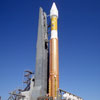
|
 |
OTHER HEADLINES Additional stories today
|
 |
Kosmos rocket launched -- Two Russian government satellites were delivered to space by a Kosmos-3M rocket flown from the country's northern space base on Wednesday, in the midst of a day that included three orbital launches after launch pads around the world were silent for over a month.
|
 |
Cargo ship begins flight to the space station
A supply ship bound for the International Space Station roared into orbit Wednesday, promising to give the outpost's two-man crew a delivery of fresh food, clothes, equipment and special holiday gifts just in time for Christmas.
 FULL STORY - updated FULL STORY - updated
 |  |

|
 |
European Ariane 5 rocket launches on its 25th flight
Two satellites were shot into space by an Ariane 5 rocket Wednesday from a South American spaceport to begin missions supporting Indian telecommunications operators and European weather forecasters.
 FULL STORY FULL STORY
 |  |

|
 |
Partial ingredients for DNA, protein found around star
NASA's Spitzer Space Telescope has discovered some of life's most basic ingredients in the dust swirling around a young star. The ingredients - gaseous precursors to DNA and protein - were detected in the star's terrestrial planet zone, a region where rocky planets such as Earth are thought to be born.
 FULL STORY FULL STORY
 |  |

|
 |
Bright arc of ice
The searing arc of light seen here is Saturn's icy F ring, seen nearly edge-on. In the background, Rhea is lit by reflected light from Saturn and the rings, with only the slightest sliver of light at its bottom being from direct sunlight.
 FULL STORY FULL STORY
 |  |

|
 |
Atlas to launch DMSP-18 weather satellite
International Launch Services, a Lockheed Martin joint venture, has received authorization from the U.S. Air Force to proceed with the launch of a military weather satellite on an Atlas 5 vehicle from Vandenberg Air Force Base, Calif.
 FULL STORY FULL STORY
 |  |

|
 |
Damage puts first SpaceX rocket launch on hold
The inaugural Falcon 1 rocket suffered structural damage during a launch attempt Monday when its first stage fuel tank was sucked inward from the vacuum created by a faulty pressure valve, technicians' initial investigation has revealed.
 FULL STORY FULL STORY
 MISSION STATUS CENTER MISSION STATUS CENTER
 |  |

|
 |
Pulsar racing through space reveals comet-like trail
Scientists have uncovered a new feature in one of the closest pulsars to Earth, the Geminga pulsar. Plowing through space, this dense nugget of a dead star leaves in its wake a comet-like trail of high-energy electrons.
 FULL STORY FULL STORY
 |  |

|
 |
Modernized GPS satellite declared operational
A joint U.S. Air Force/Lockheed Martin team announced Monday that the first modernized Global Positioning System satellite has been declared fully operational for GPS users around the globe following extensive on-orbit testing of the spacecraft's new military and civilian signals. The craft was launched from the Cape in September.
 FULL STORY FULL STORY
 |  |
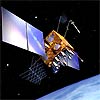
|
 |
Explosion could be black hole swallowing star
Scientists using NASA's Swift satellite have found evidence of a black hole swallowing a neutron star. This rare event created a gamma-ray burst that lasted only for a few milliseconds. However, observations of the lingering afterglow provided evidence of what could have been the demise of a neutron star orbiting a black hole.
 FULL STORY FULL STORY
 |  |
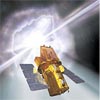
|
 |
Chandra picture shows hot supernova remains
This image from the Chandra X-ray Observatory of a supernova remnant shows X-rays produced by high-energy particles and multimillion degree gas. In 1006 AD, what was thought to be a "new star" suddenly appeared in the sky and over the course of a few days became brighter than the planet Venus. The supernova of 1006 may have been the brightest supernova on record.
 FULL STORY FULL STORY
 |  |

|
 |
Pluto spacecraft moved to Atlas assembly building
The Pluto New Horizons probe was delivered to the Atlas 5 rocket's assembly building Saturday morning for mating with its ride to space.
 MISSION STATUS CENTER MISSION STATUS CENTER
 EARLIER STORIES EARLIER STORIES
 VIDEO COVERAGE VIDEO COVERAGE
 |  |

|
 |

Additional coverage for subscribers:
 VIDEO:
PLUTO NEW HORIZONS MOUNTED ATOP THIRD STAGE PLAY VIDEO:
PLUTO NEW HORIZONS MOUNTED ATOP THIRD STAGE PLAY
 VIDEO:
BOEING DELIVERS THIRD STAGE DESPITE STRIKE PLAY VIDEO:
BOEING DELIVERS THIRD STAGE DESPITE STRIKE PLAY
 VIDEO:
FINAL SRB ATTACHED TO THE ATLAS 5 ROCKET PLAY VIDEO:
FINAL SRB ATTACHED TO THE ATLAS 5 ROCKET PLAY
 VIDEO:
SPACECRAFT UNDERGOES SPIN BALANCE TESTING PLAY VIDEO:
SPACECRAFT UNDERGOES SPIN BALANCE TESTING PLAY
 SUBSCRIBE NOW SUBSCRIBE NOW

|
Extra rocket checks postpone Pluto launch
Launch of the Pluto-bound New Horizons spacecraft is being delayed so engineers can perform precautionary boroscope inspections of the Atlas 5 rocket's first stage fuel tank.
 MISSION STATUS CENTER MISSION STATUS CENTER
 ONE YEAR AGO: ATLAS 5 LAUNCHES AMC 16 ONE YEAR AGO: ATLAS 5 LAUNCHES AMC 16
 |  |
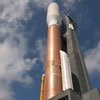
|
 |
Record-setting flight to launch from shuttle runway
NASA announced Friday the agency's Kennedy Space Center will be the takeoff site for an attempt to set the record for the longest flight of an aircraft or balloon. Steve Fossett will attempt to fly
solo around the world, non-stop without refueling, in the aircraft designed by Burt Rutan.
 FULL STORY FULL STORY
 |  |

|
 |
Shuttle leaders decide to remove tank foam ramps
NASA engineers and managers have recommended the removal of a protective foam air deflector from the shuttle's external tank to eliminate a major source of potentially dangerous launch debris, a top agency official said Thursday. While NASA has not given up launching the next flight in May, additional work to implement and certify other changes required by the deflector removal could push the launch to later next summer.
 FULL STORY FULL STORY
 |  |

|
 |

Additional coverage for subscribers:
 AUDIO:
LISTEN TO THURSDAY'S NEWS TELECON QUICKTIME | FOR IPOD AUDIO:
LISTEN TO THURSDAY'S NEWS TELECON QUICKTIME | FOR IPOD
 VIDEO:
SHUTTLE INSPECTION BOOM LOADED INTO DISCOVERY PLAY VIDEO:
SHUTTLE INSPECTION BOOM LOADED INTO DISCOVERY PLAY
 VIDEO:
DISCOVERY RECEIVES ITS 50-FOOT ROBOT ARM PLAY VIDEO:
DISCOVERY RECEIVES ITS 50-FOOT ROBOT ARM PLAY
 SUBSCRIBE NOW SUBSCRIBE NOW

|
Old stars and mysterious cosmic explosions linked
Cosmic gamma-ray bursts, the most powerful explosions in the universe, have the extreme brilliance of a billion billion Suns and occur several times a day. But they are not all created equal. Astronomers have known that two types exist -- long ones that last for tens or hundreds of seconds, and short bursts, which last a few milliseconds to a second. The origin of the short bursts has been shrouded in mystery until now.
 FULL STORY FULL STORY
 |  |

|
 |
Debris disk could be forming terrestrial planets
Astronomers have found a debris disk around a sun-like star that may be forming or has formed its terrestrial planets. The disk - a probable analog to our asteroid belt - may have begun a solar-system-scale demolition derby, where the rocky remains of failed planets collide chaotically.
 FULL STORY FULL STORY
 |  |

|
 |
Hot, massive haloes found around most spiral galaxies
Astronomers using ESA's XMM-Newton observatory have found very hot gaseous halos around a multitude of spiral galaxies similar to our Milky Way galaxy. These 'ghost-like' veils have been suspected for decades but remained elusive until now.
 FULL STORY FULL STORY
 |  |

|
 |
Earth return of asteroid sampling craft delayed
After weeks of teetering on the brink of being lost in space, officials have given up plans to bring the hard-luck Hayabusa asteroid probe back to Earth in 2007. The Japanese craft had to restart its ion engines by Wednesday to begin the trip home.
 FULL STORY FULL STORY
 |  |
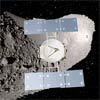
|
 |
Major discovery in the outer Solar System
Astronomers have discovered an unusual small body orbiting the Sun beyond Neptune, in the region astronomers call the Kuiper belt. This new object is twice as far from the Sun as Neptune and is roughly half the size of Pluto. The body, temporarily code-named "Buffy", has a highly unusual orbit which is difficult to explain using previous theories of the formation of the outer Solar System.
 FULL STORY FULL STORY
 |  |

|
 |
Hubble 'weighs' the companion of Dog Star
For astronomers, it's always been a source of frustration that the nearest white-dwarf star is buried in the glow of the brightest star in the nighttime sky. This burned-out stellar remnant is a faint companion of the brilliant blue-white Dog Star, Sirius, located in the winter constellation Canis Major.
 FULL STORY FULL STORY
 |  |

|
 |
Surprise auroras on Mars
Auroras similar to Earth's Northern Lights appear to be common on Mars, according to physicists at the University of California, Berkeley, who have analyzed six years' worth of data from the Mars Global Surveyor.
 FULL STORY FULL STORY
 |  |

|
 |
Maneuver puts MESSENGER on track for Venus
NASA's Mercury-bound MESSENGER spacecraft has successfully fired its large bipropellant thruster for the first time since launch, completing the first of several critical deep space maneuvers that will help the spacecraft reach Mercury orbit. The burn puts the craft on course for a close flyby of Venus next year.
 FULL STORY FULL STORY
 |  |
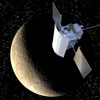
|
 |
Pandora on a string
This dramatic image from the Cassini spacecraft shows Saturn's craggy moon Pandora skimming along the F ring's outer edge. Pandora orbits about 620 miles exterior to the ring, but in this view is projected onto the ring. The image reveals the odd shape of this moonlet, which is 52 miles across.
 FULL STORY FULL STORY
 |  |

|
 |
Seeing double at Saturn
Saturn's sibling moons, Rhea and Dione, pose for the Cassini spacecraft in this view. Even at this distance, it is easy to see that Dione (below) appears to have been geologically active in the more recent past, compared to Rhea (above). Dione's smoother surface and linear depressions mark a contrast with Rhea's cratered terrain.
 FULL STORY FULL STORY
 |  |

|
 |
Fate of Japan's troubled asteroid probe uncertain
Japanese officials are struggling to fix a horde of problems plaguing the Hayabusa space mission in time to begin its journey back to Earth with or without a package of specimens that were supposed to have been collected from the surface of asteroid Itokawa late last month.
 FULL STORY FULL STORY
 |  |

|
 |
SpaceX targeting Falcon 1 launch for around Dec. 19
Fresh supplies for the commercially developed Falcon 1 rocket are en route to the tiny launch island in the Pacific, giving Space Exploration Technologies hopes of flying the booster's maiden mission before the holidays.
 FULL STORY FULL STORY
 |  |

|
 |
Team maps dark matter in startling detail
Clues revealed by the recently sharpened view of the Hubble Space Telescope have allowed astronomers to map the location of invisible "dark matter" in unprecedented detail in two very young galaxy clusters.
 FULL STORY FULL STORY
 |  |

|
 |
Hubble tracks shockwaves escaping newborn star
Like traffic on a freeway, plasma spewing from the poles of newborn stars moves in clumps that travel at different speeds. When fast-moving particles run into slower material on these cosmic freeways, the resulting "traffic jams" create massive shock waves that travel trillions of miles.
 FULL STORY FULL STORY
 |  |

|
 |
Rivers on Saturn moon resemble those on Earth
Recent evidence from the Huygens probe of the Cassini mission suggests that Titan, the largest moon orbiting Saturn, is a world where rivers of liquid methane sculpt channels in continents of ice. Surface images even show gravel-sized pieces of water ice that resemble rounded stones lying in a dry riverbed on Earth.
 FULL STORY FULL STORY
 |  |
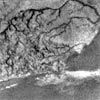
|
 |
Shuttle team set to debate removing tank foam ramps
NASA managers plan to meet next week to discuss whether to ship a shuttle external fuel tank to Florida in early February without so-called PAL ramp wind delectors in hopes wind tunnel tests and computer modeling will prove the ramps aren't needed to shield external pressurization lines and a cable tray from aerodynamic buffeting.
 FULL STORY FULL STORY
 IMAGES: FOAM LOST ON JULY LAUNCH IMAGES: FOAM LOST ON JULY LAUNCH
 |  |
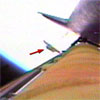
|
 |

Additional coverage for subscribers:
 VIDEO:
ONBOARD CAMERA SHOWS FOAM BREAKING FREE PLAY VIDEO:
ONBOARD CAMERA SHOWS FOAM BREAKING FREE PLAY
 SUBSCRIBE NOW SUBSCRIBE NOW

|
Mysterious space shuttle oxygen leak being probed
NASA and contractor engineers are studying data indicating a possible oxygen leak in the shuttle Discovery's aft engine compartment during its return-to-flight mission last July.
 FULL STORY FULL STORY
 VIDEO: PRE-FLIGHT | THE MISSION VIDEO: PRE-FLIGHT | THE MISSION
 |  |

|
 |
Former shuttle chief talks about new CEV launcher
As expected, shuttle solid-fuel rocket builder Alliant Techsystems - ATK - will be the prime contractor for design and development of the first stage of NASA's next-generation Crew Launch Vehicle, intended to propel astronauts into low-Earth orbit after the space shuttle's retirement in 2010.
 FULL STORY FULL STORY
 |  |
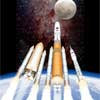
|
 |

Additional coverage for subscribers:
 VIDEO:
LUNAR ARCHITECTURE PLAN DIAL-UP | BROADBAND VIDEO:
LUNAR ARCHITECTURE PLAN DIAL-UP | BROADBAND
 VIDEO:
QUESTION AND ANSWER SESSION DIAL-UP | BROADBAND VIDEO:
QUESTION AND ANSWER SESSION DIAL-UP | BROADBAND
 VIDEO:
NARRATED ANIMATION OF NEW ROCKETS PLAY | Free preview VIDEO:
NARRATED ANIMATION OF NEW ROCKETS PLAY | Free preview
 VIDEO:
NARRATED ANIMATION OF LUNAR LANDER PLAY | Free preview VIDEO:
NARRATED ANIMATION OF LUNAR LANDER PLAY | Free preview
 SUBSCRIBE NOW SUBSCRIBE NOW

|
Craters, craters everywhere on Saturn's moon Rhea
A giant mosaic revealing Saturn's moon Rhea in her full glory and craters within craters that cover the scarred face of the icy world's terrain are presented in new images from the Cassini spacecraft's recently encounter.
 FULL STORY FULL STORY
 |  |

|
 |
Galaxy collisions dominate the local universe
More than half of the largest galaxies in the nearby universe have collided and merged with another galaxy in the past two billion years, according to a Yale astronomer in a study using hundreds of images from two of the deepest sky surveys ever conducted.
 FULL STORY FULL STORY
 |  |

|
 |
Aura spacecraft peers into Earth's ozone hole
NASA researchers, using data from the agency's Aura satellite, determined the seasonal ozone hole that developed over Antarctica this year is smaller than in previous years.
 FULL STORY FULL STORY
 |  |
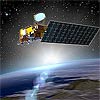
|
 |
Mars rovers continue to explore and amaze
NASA's durable twin Mars rovers have successfully explored the surface of the mysterious red planet for a full Martian year. "The rovers went through all of the Martian seasons and are back to late summer," says the deputy rover project manager. "We're preparing for the challenge of surviving another Martian winter."
 FULL STORY FULL STORY
 |  |

|
 |

Additional coverage for subscribers:
 VIDEO:
NEW PANORAMA FROM SPIRIT PLAY VIDEO:
NEW PANORAMA FROM SPIRIT PLAY
 VIDEO:
NEW PANORAMA FROM OPPORTUNITY PLAY VIDEO:
NEW PANORAMA FROM OPPORTUNITY PLAY
 SUBSCRIBE NOW SUBSCRIBE NOW

|
Launch pad rehearsal completed for Pluto mission
Lockheed Martin's Atlas 5 rocket returned to its processing hangar from the launch pad Tuesday, ending a successful three-day countdown dress rehearsal and marking the start of the next phase in this time-sensitive pre-launch campaign for NASA's New Horizons mission to Pluto.
 MISSION STATUS CENTER MISSION STATUS CENTER
 |  |

|
 |

Additional coverage for subscribers:
 VIDEO:
ATLAS 5 FIRST STAGE ERECTED PLAY | Preview VIDEO:
ATLAS 5 FIRST STAGE ERECTED PLAY | Preview
 VIDEO:
CENTAUR UPPER STAGE ADDED PLAY | Preview VIDEO:
CENTAUR UPPER STAGE ADDED PLAY | Preview
 VIDEO:
STRAP-ON SOLID ROCKET BOOSTERS PLAY | Preview VIDEO:
STRAP-ON SOLID ROCKET BOOSTERS PLAY | Preview
 VIDEO:
THE PROBE'S NUCLEAR POWER SOURCE PLAY | Preview VIDEO:
THE PROBE'S NUCLEAR POWER SOURCE PLAY | Preview
 VIDEO:
THE SPACECRAFT ARRIVES AT THE LAUNCH SITE PLAY VIDEO:
THE SPACECRAFT ARRIVES AT THE LAUNCH SITE PLAY
 VIDEO:
PLUTO NEW HORIZONS IN CAPE CLEANROOM PLAY VIDEO:
PLUTO NEW HORIZONS IN CAPE CLEANROOM PLAY
 SUBSCRIBE NOW SUBSCRIBE NOW

|
Cassini reveals spectacular evidence of an active moon
Jets of fine, icy particles streaming from Saturn's moon Enceladus were captured in recent images from NASA's Cassini spacecraft. The images provide unambiguous visual evidence that the moon is geologically active.
 FULL STORY FULL STORY
 |  |

|
 |
Servicing the Hubble:
Shuttle plans refined
Preparations for a shuttle mission to upgrade and repair the Hubble Space Telescope in late 2007 or early 2008 are picking up steam as engineers map out the details of a five-spacewalk flight designed to keep the venerable observatory alive and well through at least 2013.
 FULL STORY FULL STORY
 U.S. SHOPPERS: 2006 HUBBLE CALENDAR U.S. SHOPPERS: 2006 HUBBLE CALENDAR
 |  |

|
 |
An interview with NASA Administrator Mike Griffin
In a wide-ranging interview with CBS Space Consultant William Harwood, NASA Administrator Michael Griffin - he insists on being called Mike - reiterated his strong support for a shuttle mission to service the Hubble Space Telescope.
 FULL STORY FULL STORY
 |  |

|
 |
When moons align...
In a rare moment, the Cassini spacecraft captured this enduring portrait of a near-alignment of four of Saturn's restless moons. Timing is critical when trying to capture a view of multiple bodies, like this one. All four of the moons seen here were on the far side of the rings from the spacecraft when this image was taken; and about an hour later, all four had disappeared behind Saturn.
 FULL STORY FULL STORY
 |  |

|
 |
Chandra proves black hole influence is far reaching
Scientists using NASA's Chandra X-ray Observatory have discovered evidence of energetic plumes - particles that extend 300,000 light years into a massive cluster of galaxies. The plumes are due to explosive venting from the vicinity of a supermassive black hole, and they provide dramatic new evidence of the influence a black hole can have over intergalactic distances.
 FULL STORY FULL STORY
 |  |

|
 |
When worlds collide: Forces that produce new galaxies
When galaxies collide -- as our galaxy, the Milky Way, eventually will with the nearby Andromeda galaxy -- what happens to matter that gets spun off in the collision's wake? With help from the Spitzer Space Telescope, Cornell astronomers are beginning to piece together an answer to that question.
 FULL STORY FULL STORY
 |  |

|
 |
Hubble paints giant mosaic of the Crab Nebula
A new Hubble Space Telescope image - among the largest ever produced with the Earth-orbiting observatory - gives the most detailed view so far of the entire Crab Nebula. The Crab is arguably the single most interesting object, as well as one of the most studied, in all of astronomy.
 FULL STORY FULL STORY
 |  |

|
 |
Astronomers examine the evolution of a supernova
Scientists using NASA's Chandra X-ray Observatory have witnessed a cosmic rite of passage, the transition from a supernova to a supernova remnant, a process that has never seen in much detail until now, leaving it poorly defined.
 FULL STORY FULL STORY
 |  |

|
 |
SOHO's ten-year triumph in unmasking the Sun
Thanks to one of the most productive spacecraft ever built, scientists are far better acquainted with the star that lights our world and gives us life. The Solar and Heliospheric Observatory (SOHO) was launched into space atop an Atlas rocket from Cape Canaveral on December 2, 1995. The tenth anniversary of SOHO's launch is a time for celebration for the ones who conceived, created and still operate this unprecedented solar spacecraft - and who have rescued it from oblivion three times.
 FULL STORY FULL STORY
 |  |

|
 |

Additional coverage for subscribers:
 VIDEO:
ATLAS ROCKET LAUNCHES SOHO SHORT | FULL LENGTH VIDEO:
ATLAS ROCKET LAUNCHES SOHO SHORT | FULL LENGTH
 VIDEO:
SOHO SUCCESSFULLY DEPLOYED FROM ROCKET PLAY VIDEO:
SOHO SUCCESSFULLY DEPLOYED FROM ROCKET PLAY
 VIDEO:
LAUNCH TRACKING CAMERA 1 PLAY VIDEO:
LAUNCH TRACKING CAMERA 1 PLAY
 VIDEO:
LAUNCH TRACKING CAMERA 2 PLAY VIDEO:
LAUNCH TRACKING CAMERA 2 PLAY
 VIDEO:
LAUNCH TRACKING CAMERA 3 PLAY VIDEO:
LAUNCH TRACKING CAMERA 3 PLAY
 VIDEO:
PAD 36B'S SERVICE TOWER ROLLED BACK FOR LAUNCH PLAY VIDEO:
PAD 36B'S SERVICE TOWER ROLLED BACK FOR LAUNCH PLAY
 VIDEO:
SOHO SPACECRAFT PRE-LAUNCH PREPS AT THE CAPE PLAY VIDEO:
SOHO SPACECRAFT PRE-LAUNCH PREPS AT THE CAPE PLAY
 SUBSCRIBE NOW SUBSCRIBE NOW

|
Probe finds evidence for large aquifers on early Mars
Substantial quantities of liquid water must have been stably present in the early history of Mars. The findings of the mapping spectrometer on the European Mars Express orbiter have implications on the climatic history of the planet and the question of its "habitability" at some point in its history.
 FULL STORY FULL STORY
 |  |

|
 |
OTHER HEADLINES Additional stories today
|
 |
First Galileo satellite travels to launch site -- GIOVE A, the first Galileo satellite, departed from ESA's test facility at the European Space Research and Technology Centre in The Netherlands, bound for the Baikonur Cosmodrome in Kazakhstan.
|
 |
|
Read our earlier news archive page.
|



